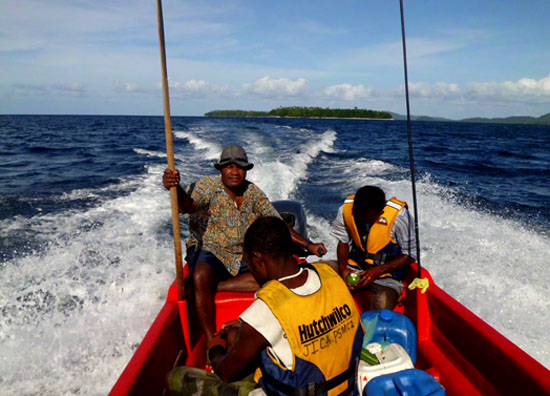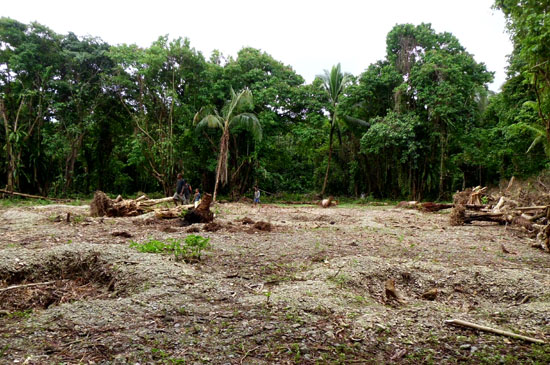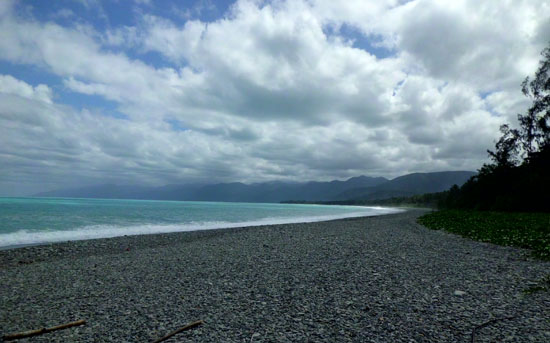
OPINION: AVUAVU, Guadalcanal: I opened my eyes slowly and looked around. The room was unfamiliar. My hand gently caressed what I was lying on. It was hard. There was no mattress, no pillow and no linen. It was plywood.
I looked across to the other side of the room. My cousin, Dr John Hue, was beginning to wake up. He was lying on another piece of plywood. I turned around and next to me was a pile of tools: hammer, saw, spades, mullet, chisels, etc. They looked well worn, A sign that they have been intensively used.
I stretched, yawned and forced myself to wake up. It’s been a while since I slept rough like this.
After years of living and working overseas I was beginning to lose touch with the hard realities of life in rural Solomon Islands.
My childhood experiences of growing up on the Weather Coast of Guadalcanal have now begun to fade into memories that I recall every now-and-then.
Life in Honolulu, Hawai’i, where I now live and work, is comfortable; too comfortable, I sometimes think.
Sleeping on a piece of plywood was a great reminder that life in rural areas had not changed much from when I was a kid.
Hospital room
This was Wednesday night last week when Dr Hue and I spent the night in a room in a hospital under construction at Manekalaku, Marau Sound, on east Guadalcanal.
We arrived at nearly midnight, had a shower and then dinner. On the menu was second grade Solomon blue tuna mixed with cold rice that some wantoks who work as builders at the hospital had cooked that evening.
We then boiled water and had tea. Because we were cold and tired, this was like a meal for royalties. When we arrived, the contractors were still working. They worked until after 1am. I was so tired that the engine of a bulldozer and a truck working outside didn’t bother me.
Instead, they lulled me into a deep sound sleep. It was as though I was sleeping on a well cushioned mattress.
The hospital is a donation from John Sullivan, a lawyer and shareholder at Tavanipupu Resort, to the people of Marau and Tasimauri. After waking up, Dr Hue and I went outside to admire the building and reflect on the service it will provide for our people.
Dr Hue told me that when completed, the hospital will have a medical laboratory, x-ray facilities, a minor operating theatre and be able to treat victims of accidents and emergencies. We were thankful that John Sullivan had given the people of Marau and Tasimauri such a wonderful gift.
Quality, reliable and accessible health service is something that we desperately need. The Area Health Center at Marau, which was the largest health facility in the Marau-Tasimauri area, was burned down during the civil unrest of 1999–2003.
'Living ocean'
I took this trip with Dr Hue who was travelling to Haimarao, at Avuavu, to visit and assess the site for another hospital.
Haimarao is where I was born and grew up. It is in the heart of the Weather Coast, that part of Guadalcanal we call Tasimauri, which literally means “living ocean.”
On Thursday morning at around 8am, after breakfast and talk stories with wantoks and relatives at Marau, we left for the rest of the trip. As soon as our 7m fiberglass canoe, powered by a 40 hp outboard motor engine, sailed out of the Malabui Passage, the turbulent waves of Tasimauri hit us. It was as though to embrace its children back into its open waters.
We were now officially in the Weather Coast. I sat on the containers of petrol perched in the middle of the canoe and watched the quarrelsome waves hit our boat from every direction. They eventually tumbled violently ashore in the distance in a mountain of white foam and a roar that could be heard from far away.
This was not a trip for the faint hearted or for those easily intimidated by rough seas. It’s dangerous. But, it is the only way we travel because no roads reach our part of the island.
I sat there watching the waves and wondering why no roads were built.
After more than 30 years of independence, we still travel by canoe, which is expensive and dangerous. A road from Honiara to Marau and on to Kuma (or even further) would have opened up a large part of Guadalcanal and facilitate our contribution to the country’s economy. It would have also cut down the transaction costs of doing business and providing services.
Aid funds?
I wondered where the millions of dollars in Solomon Islands government funds and aid have gone.
For a while, I sat there gazing at the ocean wondering what I could do to help and whether living overseas meant that I had abandoned my place and people. Perhaps those who criticise me for living overseas were right after all.
But, if I come home, what could I possibly do to help? We arrived at Haimarao before midday. We went to my house, had a shower and then lunch. This time the menu was pana, kasume and kemau.
We then went to visit the site for the proposed hospital. I was amazed. In the previous weeks, the people from villages between Bokasughu to Kidivoroa and up the Bolavu River cleared the site for the hospital.
They dug up huge trees and carried them to the side of the clearing. While I was proud of the industriousness of my people and their contributions to building a hospital, I was sad that they had to dig up trees manually at this day and age. A small bulldozer would have helped a lot.
I imagine that to hire a bulldozer and get it to Haimarao would have cost less than the prime minister’s weekly rent at the Honiara Hotel, or the many overseas trips that our members of Parliament and government officials take each month.
It is sad that in the 21st century the people of Tasimauri are still digging up trees manually because they are desperate to have access to quality and reliable health services. It seems that development – whatever that term means – has left us stranded in the 1960s.
Avuavu airstrip
The last time the people of Tasimauri did similar tree-digging was in the mid-1960s to clear the Avuavu airstrip, which is now overgrown and lays unused next to the site for the hospital.
I wish that in the next couple of weeks responsible authorities send a bulldozer to help the Tasimauri people prepare the site for the hospital.
Dr Hue tells me that when completed, the hospital will have a medical laboratory and x-ray facilities, and manned by a medical doctor who will provide general health care.
It should improve access to health services for about 10,000 Tasimauri people and cut the number of referrals and the costs to both government and individuals.
While this is a positive step, it is far from adequate.
Along with the hospital, an eye clinic will also be built at Haimarao. This is funded by Foresight Australia as its contribution to infrastructure development under the Solomon Islands National Eye Care Programme 2010–2014. As part of this programme, three eye clinics have so far been built in Honiara, Kilufi and Kirakira.
In the next couple of months two others will be built: one in Gizo and the other at Haimarao. Dr Hue is Foresight Australia’s local project coordinator and one of those instrumental in facilitating the construction of the hospital and eye clinic at Haimarao.
As I watched the people of Tasimauri struggle as they demonstrate to the government their commitment to improving health services, I wondered why our people have often been left behind, forgotten, in this process towards greater and better opportunities.
I wondered why they were manually digging up trees in this day and age. That evening, as I walked along the beach with relatives and friends and watched the waves tumbled ashore, I could see my past and future reflected into the waves of the Tasimauri Sea.
The rugged beauty of this place is mesmerising. As I watched, the last flicker of sunlight disappear behind Vahato Point. I wondered whether it is now time to come home.


This work is licensed under a Creative Commons Attribution-NonCommercial 3.0 New Zealand Licence.




